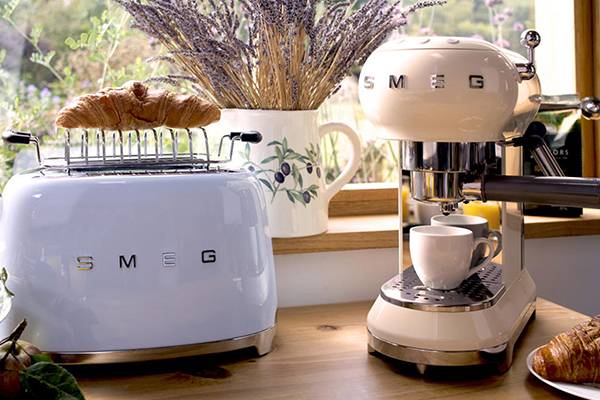
SMEG Customer Case Study
Download this data sheet to explore the features and benefits of Naveo Commerce for Enterprise Grocery.
We explore the rising trend for D2C eCommerce. Will manufacturers take the opportunity to widen revenue opportunities?
The supply chain used to be very simple. Manufacturers supplied retailers, who sold their product at a mark-up to end-users. Today, the evolution of the digital age has paved the way for manufacturers to cut out the middle-man and bypass retailers to sell direct to the end consumer.
It’s clear that today’s consumers are demanding better customer experiences and companies, of all shapes and sizes, are fighting to deliver direct, one-to-one, experiences that exceed expectations. But beyond the desire to drive more direct sales, what’s in it for manufacturers and B2B businesses?
Direct-to-consumer (D2C) eCommerce is a way for manufacturers and B2B businesses to take matters into their own hands. Not only is it a way of opening up new sales avenues to grow profits, build customer insight and consequently gain a competitive edge.
Adopting a D2C approach might just provide the boost that some manufacturers are looking for. Being so dependent on their supply chain partners, often constrained to their binding contracts with retailers, can cause an inability to react quickly to the industry.
If a manufacturer chooses to sell D2C, they can remove these barriers and have far more operational control over everything online and ‘behind the buy button’.
D2C eCommerce also provides manufacturers with more control over their relationship with the customer and the ability to leverage additional consumer insights that come with it.
In a recent survey from Episerver, we see a rising trend for consumers spending directly with manufacturers, “59% of respondents prefer to do research directly on brand sites” and “55% want to buy from brands directly.” It’s clear that as brands and manufacturers become more comfortable with selling direct, this trend will only grow. Likewise, more and more consumers appreciate that buying direct means a better brand experience.
– Read more from our informative and industry leading guide of news and Naveo Commerce company developments

In order to fully realise the benefits of a D2C channel, businesses need to ensure they have the correct internal skills and capacity to work directly with consumers, or partner with a third-party logistics company (3PL) that does. Those selling D2C must implement the technology to handle high order volumes while effectively meeting consumer demands and expectations. This includes the ability to offer fast and reliable delivery, and manage stock held in the warehouse, as well as allocating it efficiently to ensure smooth pick and pack, dispatch and returns.
The most effective way to do this is to ensure that all operations are fully integrated by a reliable order management system (OMS). This would enable employees and customers to access a real-time view of a customer’s activity in one place, and allow self-service actions, such as returns.
The benefits of D2C are being realised by many businesses that once relied on retail partners to sell their products. Nike, for example, the #1 leading footwear and apparel brand in the market, recently announced their “Triple Double Strategy (2X)” – a strategic decision to double their focus on direct to consumer connections and speed to market.
According to Market Realist, the retailer plans to grow this part of its business by 250% in the next 5 years. In the company’s forecast, its D2C sales will reach $16 billion by 2020—a massive increase from the $6.6 billion this channel generated in 2015. They plan to focus on their own eCommerce website and distribution from their own stores – with an emphasis on 12 key cities, across 10 countries.
At a time, when most big companies would be doubling efforts on what has made them successful to date. Instead, Nike has proactively decided to disrupt themselves before the competition. This means they will be streamlining the number of distribution partners from a whopping 30,000 retailers and 110,000 distribution points, down to 40 key retail partners.
Clearly such dramatic strategies are not for the faint hearted, one thing’s for sure, Nike have firmly taken back control and deciding to “just do it” rather than wait for their retail partners to catch up with market changes. For more insight into Nike’s double-down strategy download the full D2C eCommerce report.
In our recent D2C eCommerce report we explore other success stories, such as mattress brand, Casper, Dollar Shave Club, an innovative men’s shaving brand, along with other well-known names such as Glossier and Farrow & Ball.
So, we know that this shift in business model can allow manufacturers to reap huge rewards. However, what all these brands have in common is their fast-growth strategy. In order to stay ahead, manufacturers need to invest and be prepared to adapt to new technologies, processes and logistics partners to meet changing consumer expectations.
So, the question remains, as online evolves, will manufacturers take the opportunity to widen revenue opportunities, whilst they still can?
Every manufacturer needs to take a look at the financial case for Direct-to-Consumer eCommerce. Would creating an eCommerce channel create a better buying experience? Is there potential to make eCommerce a large percentage of your revenue? More importantly what’s the impact of staying still?
By understanding the current situation, your operational limitations and inefficiencies you’ll be able to find the right technology solutions to improve your customer experience and scale your business online. Almost half (48%) of manufacturers are now racing to build D2C channels, while the number of brands selling direct to consumers are expected to grow by 71% this year alone.

Download this data sheet to explore the features and benefits of Naveo Commerce for Enterprise Grocery.

As Naveo Commerce plans its exciting launch of Scan & Go supermarket technology, we look at the key differences between this and self-checkout services already offered in most grocery stores.

As Naveo Commerce plans its exciting launch of Scan & Go supermarket technology, we look at the key differences between this and self-checkout services already offered in most grocery stores.